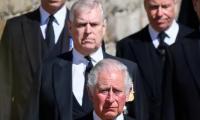central pillar of its response to Abu Bakar Baghdadi-led Daesh or IS’s ideological challenge whose followers will excitedly seize on Omar’s death to advance their own cause.
In February 2014 Zawahiri had disowned Baghdadi and his Islamic State, which claims to rule as a caliphate over large portions of Iraq and Syria. Ever since then, Baghdadi’s ISIS has competed with al-Qaeda for supremacy on the jehadi horizons. Baghdadi says he is the caliph, the “Ameer of the Believers,” and he therefore demands the loyalty of all other jehadis, including al-Qaeda’s men. On the other hand, Zawahiri responded to Baghdadi’s power play by arguing that Mulla Omar was the rightful “Ameer of the Believers.”
Exactly a year ago in July 2014, al-Qaeda’s propaganda arm, As Sahab, released an old video of Osama bin Laden under Zawahiri’s instructions, explaining his oath to Omar. “My pledge of allegiance to the Ameer of the Believers [Mulla Omar] is the great pledge of allegiance, which is mentioned in the chapters of the Quran and the stories of the Sunnah. Every Muslim should set his mind and heart and pledge allegiance to the Ameer of the Believers Mulla Omar for this is the great pledge.” Although the video was recorded prior to the September 11, 2001 attacks, the message it was intended to convey was still relevant: Osama swore allegiance to Mulla Omar, so all others should as well, and there was no need to join Abu Baghdadi’s cause. But it has transpired that the Zawahiri-led al-Qaeda was actually pledging allegiance to a corpse because Omar was dead by that time.
Therefore, it seems strange that Zawahiri has not only failed to react to Mulla Omar’s death, which has already been confirmed by the Afghan Taliban, he also did not issue any statement over the June 15, 2015 assassination [in a US drone strike in Yemen] of his second-in-command, Nasir al-Wahayshi, while leaders of the other jehadi organisations have published eulogies in his memory. Nasir served as al-Qaeda chief in the Arabian Peninsula (AQAP), which is one of the most dangerous branches of the terrorist group. His death was considered to be the biggest blow to al-Qaeda since the death of Osama bin Laden as he was one day expected to take over the command from its current global chief, Zawahiri. His prolonged absence is raising some serious questions whether he is avoiding a media appearance out of fear of having his whereabouts discovered by the Americans? Whether he is facing serious health problems or has he already died and al-Qaeda is hiding that fact just like the Afghan Taliban did to evade a divide in its rank and file.
While it is hard to answer these tricky questions because of lack of credible information, the fact is that the death of Mullah Omar has left only one fugitive with a connection to the 9/11 terrorist attacks - Zawahiri - with a huge bounty of $25 million on his head. He had already been indicted by the United States in connection with the August 7, 1998, bombings of the American embassies in Tanzania and Kenya that killed 225 people. One of his wives and two of their children were killed in a US air strike in late 2001. Dr Zawahiri went into hiding after US-led Allied Forces overthrew the Taliban regime in Kabul headed by Mulla Omar.
Zawahiri, one of the founders of the international terror group, has played a significant role in the organisation for over a decade as Bin Laden’s number two. Even before his elevation, he was widely regarded as the de facto leader and public face of al-Qaeda. He actually became the public face of al-Qaeda after the US-led Allied Forces had invaded Afghanistan in 2001. Since then, he has released fiery messages of jehad via video and audiotapes. US intelligence community believes that Zawahiri seized control of al-Qaeda’s organisational set-up long ago and rebuilt the terrorist network into an organisation capable of launching lethal terrorist attacks across the globe, even in the United States and the United Kingdom.
Dr Zawahiri is believed to be hiding in the Pak-Afghan border region, although he has continued to evade capture and his precise whereabouts are unknown. In January 2006, the American CIA had launched a drone strike in Damadola, a Pakistani village near the Afghan border where they thought Zawahiri was hiding, killing 18 villagers including four children. Although the Americans had claimed after the attack that he was among the dead, Zawahiri staged a comeback through a video that showed him unhurt. But the most credible indication of Zawahiri’s presence in Pakistan came in the aftermath of the bloody Operation Silence, carried out by the Special Services Group of the Pakistan Army in July 2007 in Islamabad against the fanatic clerics of Lal Masjid (Red Mosque).
As the Pakistani security forces took control of the mosque after a fierce gun battle, they were stunned to discover letters written by Zawahiri to Maulana Abdul Rashid Ghazi and Maulana Abdul Aziz, the fanatic cleric brothers who ran the mosque and adjacent seminary, directing them to conduct an armed revolt. Zawahiri’s Lal Masjid connection was confirmed when he had later issued a videotape asking Pakistanis to join jehad in revenge for the Lal Masjid “bloodshed”. Zawahiri’s four-minute address was titled “The Aggression against Lal Masjid”. The video was released by al-Qaeda’s media wing, as-Sahab, a few weeks after the military operation, which was conducted by the Musharraf regime came to an end.
Zawahiri’s succession to the command of al-Qaeda was announced on June 16, 2011 - 44 days after Osama’s killing. Since then, the US intelligence community believes that as al-Qaeda’s No 2, Zawahiri was in fact at the core of every major terrorist attack against the Americans, including the 9/11. After his elevation as al-Qaeda chief, the Americans believed that Zawahiri wanted to tighten his grip on the terrorist network by carrying out a major terrorist attack against the US that could cement his authority. However, al-Qaeda under his command has failed to stage any major terrorist activity in the US. His absence from the jehadi scene for almost a year keeps multiplying doubts regarding his fate, as had been the case with Mulla Omar whose mysterious absence was raising the identical questions which finally culminated in the breaking news of his silent death almost two years ago.
Demonstrators criticise introduction of a token system at the Kuntani border
He says bunkers would be demolished and weapons collected to restore peace to the area
Special Judge Central Shahrukh Arjumand conducts hearing at Adiala Jail on Friday
PN flotilla was led by Commander 14th Destroyer Squadron, Commodore Muhammad Umair
ATC Special Judge Amjad Ali Shah approves her bail until January 13
Labourers also join sit-in, bringing their pushcarts to highlight their plight







